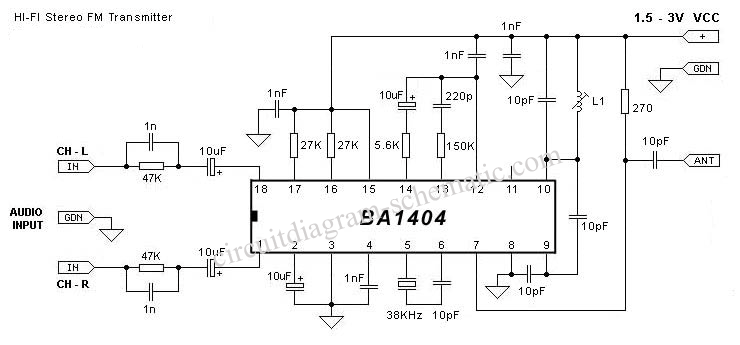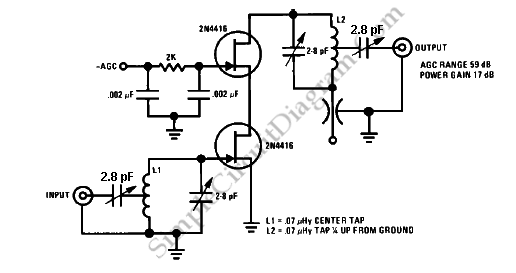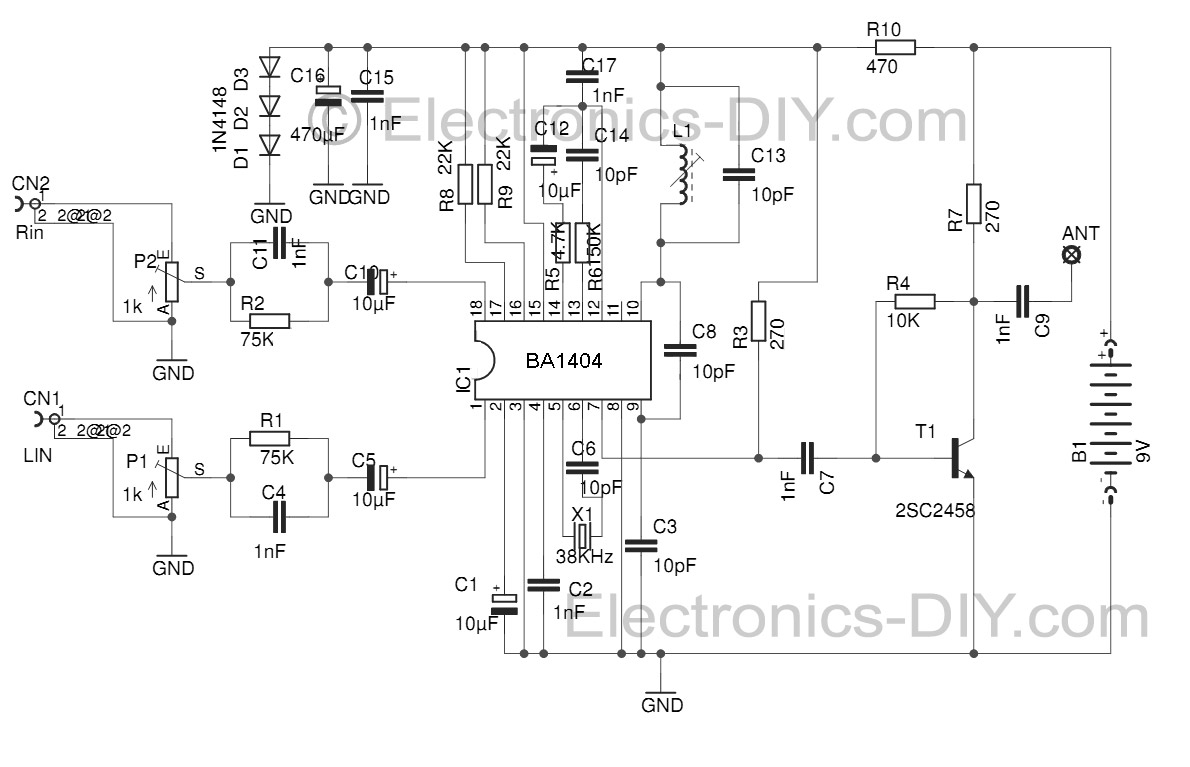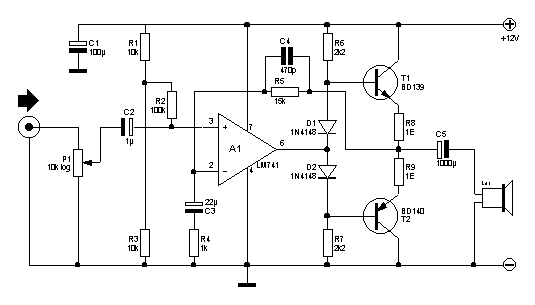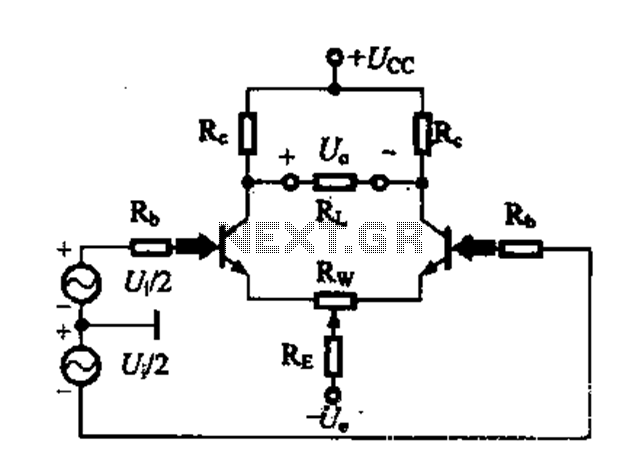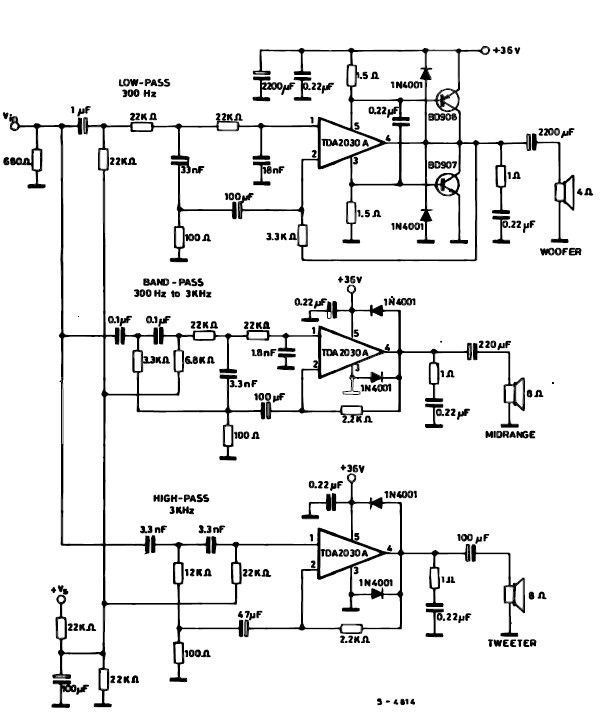
Stereo Audio Amplifier with TDA2616

A power amplifier was constructed during secondary school using transistors. The circuit offered limited power and featured a poorly designed PCB. Concurrently, access to the TDA1524 datasheet, a tone and volume control circuit, led to the decision to create a pre-amplifier to enhance sound quality from the amplifier. Both circuits functioned effectively for nearly ten years; however, the performance of the original amplifier did not meet expectations. In 2006, the decision was made to design a new power amplifier, this time utilizing an integrated circuit to minimize external components and costs.
The described power amplifier project reflects a journey through basic electronics and the evolution of design principles. The initial amplifier, built with discrete transistors, likely utilized a common emitter configuration to achieve amplification. The limited power output might have been attributed to the choice of transistors and circuit design, which often require careful selection of components to optimize performance.
The introduction of the TDA1524 integrated circuit for tone and volume control demonstrates a pivotal moment in the design process. The TDA1524 is a versatile IC capable of providing both pre-amplification and signal conditioning, which would significantly enhance the audio quality by allowing for precise control over bass, treble, and overall volume levels. This addition likely improved the overall fidelity of the sound produced by the amplifier, making it more enjoyable for listening.
The decision to transition to an integrated circuit for the new power amplifier design in 2006 indicates an understanding of modern electronic design practices. Integrated circuits offer several advantages, including reduced size, lower cost, and increased reliability due to fewer interconnections and external components. The design of the new amplifier would involve selecting an appropriate power amplifier IC, which would ideally provide higher output power and efficiency compared to the earlier transistor-based approach.
The schematic for the new power amplifier would typically include the chosen power amplifier IC, input and output capacitors, feedback resistors, and possibly a heat sink to manage thermal dissipation. Power supply considerations would also be crucial, ensuring that the amplifier operates within its specified voltage and current ratings. Additional features such as protection circuitry, including short-circuit and thermal protection, would enhance the reliability of the final design.
In summary, the evolution from a basic transistor amplifier to a more sophisticated integrated circuit design illustrates the advancements in electronic engineering and the importance of component selection in achieving desired performance outcomes in audio amplification.I built my first power amplifier when I was still in secondary school. The circuit was made of transistors, didn`t provide much power and had an ugly PCB. Around the same time I got access to a datasheet of TDA1524, a tone/volume control circuit, and I decided to use it to build a pre-amplifier, to improve the quality of the sound coming out of the amplifer. Both circuits worked well for almost a decade but the old amplifier was never up to my expectations. In 2006 I decided that it was time to build a real power amplifier, this time based on an integrated circuit to reduce the number of external components and cost
🔗 External reference
The described power amplifier project reflects a journey through basic electronics and the evolution of design principles. The initial amplifier, built with discrete transistors, likely utilized a common emitter configuration to achieve amplification. The limited power output might have been attributed to the choice of transistors and circuit design, which often require careful selection of components to optimize performance.
The introduction of the TDA1524 integrated circuit for tone and volume control demonstrates a pivotal moment in the design process. The TDA1524 is a versatile IC capable of providing both pre-amplification and signal conditioning, which would significantly enhance the audio quality by allowing for precise control over bass, treble, and overall volume levels. This addition likely improved the overall fidelity of the sound produced by the amplifier, making it more enjoyable for listening.
The decision to transition to an integrated circuit for the new power amplifier design in 2006 indicates an understanding of modern electronic design practices. Integrated circuits offer several advantages, including reduced size, lower cost, and increased reliability due to fewer interconnections and external components. The design of the new amplifier would involve selecting an appropriate power amplifier IC, which would ideally provide higher output power and efficiency compared to the earlier transistor-based approach.
The schematic for the new power amplifier would typically include the chosen power amplifier IC, input and output capacitors, feedback resistors, and possibly a heat sink to manage thermal dissipation. Power supply considerations would also be crucial, ensuring that the amplifier operates within its specified voltage and current ratings. Additional features such as protection circuitry, including short-circuit and thermal protection, would enhance the reliability of the final design.
In summary, the evolution from a basic transistor amplifier to a more sophisticated integrated circuit design illustrates the advancements in electronic engineering and the importance of component selection in achieving desired performance outcomes in audio amplification.I built my first power amplifier when I was still in secondary school. The circuit was made of transistors, didn`t provide much power and had an ugly PCB. Around the same time I got access to a datasheet of TDA1524, a tone/volume control circuit, and I decided to use it to build a pre-amplifier, to improve the quality of the sound coming out of the amplifer. Both circuits worked well for almost a decade but the old amplifier was never up to my expectations. In 2006 I decided that it was time to build a real power amplifier, this time based on an integrated circuit to reduce the number of external components and cost
🔗 External reference
